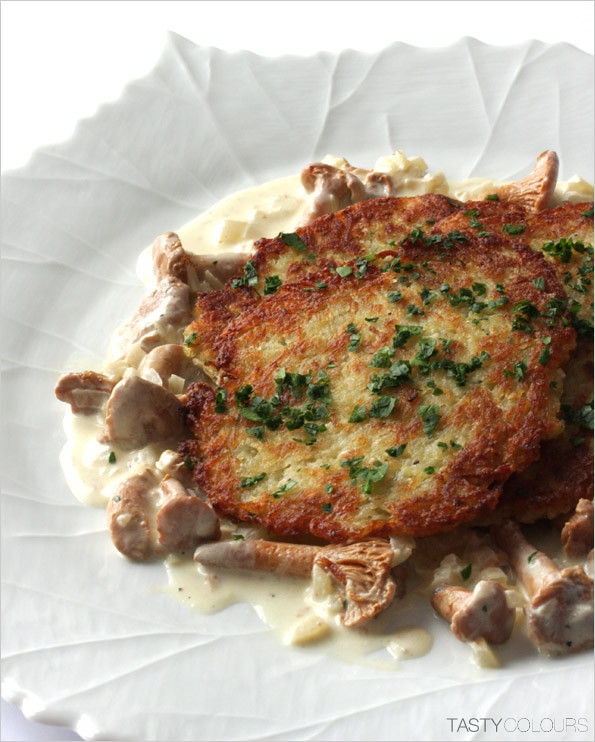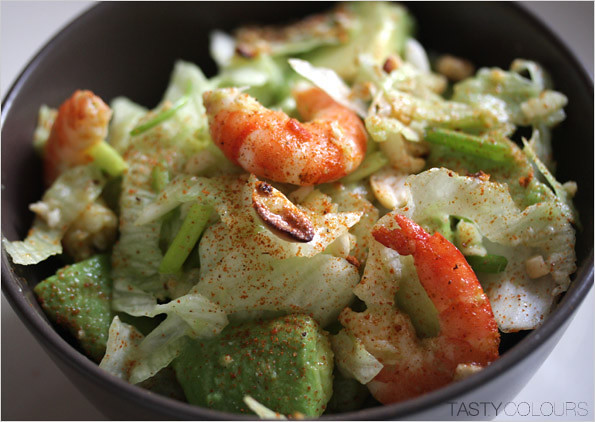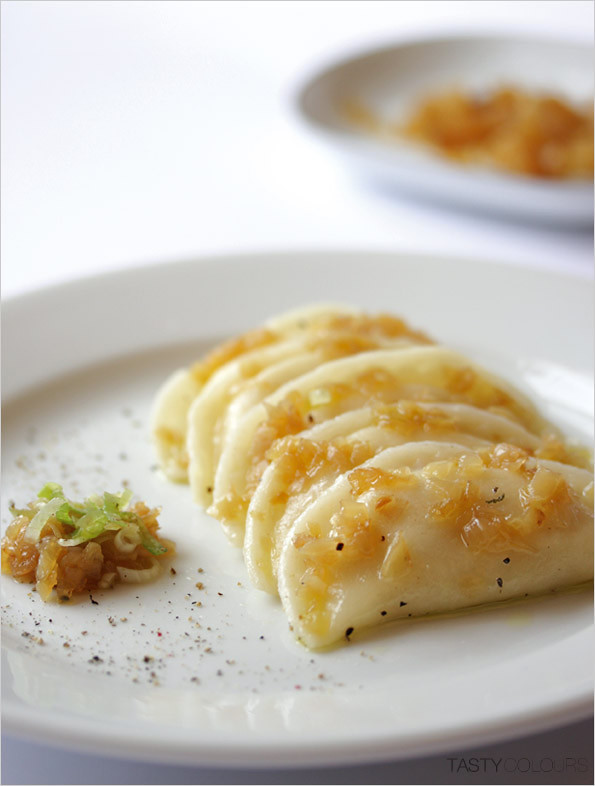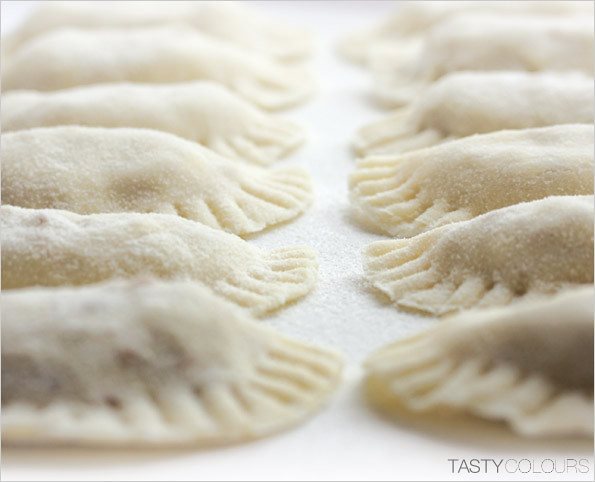Serves 4
Ingredients
350 g sour cabbage (available in shops selling Polish food)
500 g veal ribs
100 g smoked bacon, cut into strips
1 big onion, peeled, washed and finely chopped
4 potatoes, peeled, washed and cut into 3cm long strips
2 dried ceps (optional)
2 carrots, peeled and washed
2 root parsley or parsnip, peeled and washed
¼ celery root, peeled and washed
½ leek, washed
1 garlic clove, peeled
2 or 3 bay leaves
6-8 grains black pepper
3 grains allspice
1 flat teaspoon tomato concentrate
½ teaspoon caraway
1 pinch powdered chili
½ coffee spoon curcuma
Salt
Pepper
1 or pinches sugar
Preparation
First prepare the broth:
In a pan, bring to boil 1.8 l of water.
Add veal ribs and cook for about 40 minutes.
Add carrots, root parsley, celery, leek, garlic, mushrooms, bay leaves, pepper and allspice.
Cook between 30-40 minutes, under cover, over medium flame, until vegetables are soft.
In the meantime, put bacon into a frying pan and fry for 10 minutes.
Add onion to bacon and cook on a medium flame for another 10 minutes.
Prepare the cabbage:
Squeeze the cabbage and remove the excess of sour water. Keep the liquid aside.
Chop the cabbage and add into bacon with onions.
Cook, mixing often, over a small flame between 20 to 30 minutes.
The cabbage should soften.
If necessary, add a bit of broth to the cabbage, so it will not stick to the bottom of the frying pan.
Put the saucepan aside.
Strain the broth.
Throw away the vegetables or keep them for another purpose.
Reserve the meat and mushrooms.
Separate the meat from the bones and grease and cut it finely along fibers.
Add the meat into the broth.
Slice the mushrooms finely and add them into the broth.
Then add potatoes, cabbage with bacon, tomato concentrate, caraway, chili and curcuma. Salt and pepper to taste.
Bring everything to a boil, then cover with a lid and cook over medium flame until potatoes are completely cooked, meaning for around 15 minutes.
Do not hesitate to overcook potatoes a bit – they should be really soft, even going a bit into pieces.
If your soup is not sour enough, add a bit of reserved cabbage juice.
This sour cabbage soup was rarely cooked at home.
When I was a schoolgirl, I used to eat my lunch in a school cantina, where the soup was served regularly. I had enough of it and probably that is the reason why my parents cooked it occasionally.
I became a fan of kapuśniak again a few years later, when I was a student.
Now, my favorite version is prepared with sour cabbage only – which is a typical Polish pickled cabbage - which you can buy in every shop and food market in Poland and probably every food store abroad carrying Polish food.
This version - with sour cabbage - is called "kwasnica" in the Podhale region, in the south of Poland.
There exist, however, other types of "kapusniak", made from non-pickled cabbage, or a mixture of non-pickled cabbage and sour cabbage.
In the beginning of the nineties, when I was a student, we had a limited choice of cheap and fast restaurants: places serving traditional Polish food, McDonalds, hot dogs and “zapiekanka” (very large grilled open face sandwich, topped with cheese, ham and mushrooms). Italian or French restaurants were very expensive and Kebab places simply did not exist. As to “Chinese” restaurants, they were out of the question because of their awful quality.
This explains why, in these days, kapuśniak was always popular amongst students, as nutritive, rich and cheap.
Usually students spent their money for such pleasures of life like parties. Kraków, my hometown, has been a university center, with thousands of students and hundreds of pubs. Sometimes students suffered from hangover and lack of money on the day after the parties. Very often they cured the hangover in groups, sipping hot tea, coca cola and consuming something heavy, a bit greasy, nutritive and sour…for example, a good kapuśniak.
Nowadays I cook this soup very often when it is cold. I worked out my own favorite version of this soup, made exclusively from sour cabbage. I always add a bit of curcuma and chili – not Polish spices. They upgrade the color and taste of the soup, while it still remains a Polish dish.
















